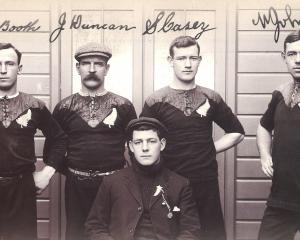
It took more than 25 years for the idea to come to fruition and Mrs Adams was at the forefront of it all, one of a core group in the community who refused to give up until funding and resources were available for the project.
Now, a working kitchen and old-fashioned teahouse fill the 1907 building, and an information centre is being housed there too.
It honours the history of a closeknit community which has raised and welcomed Mrs Adams and her family in true country style.
Born in Roxburgh, Mrs Adams grew up in Millers Flat and trained as a hairdresser, marrying her shearing contractor husband Bill and raising their five children in Millers Flat.

Once, the town had three churches, a post office, a blacksmith, hotel, a hall and, of course, the bakehouse. The one-roomed Faigan’s general store, built in 1896 — which in more recent times became the town’s Four Square but most recently was repurposed as Faigan’s Cafe — was also central to proceedings.
Now, cycle trail enthusiasts who arrive alongside the Clutha River amble through the town, which has downsized but retained its rural charm.
Mrs Adams still loves it there.
"I think Millers Flat is a great place to live because of the people. It’s friendly, I love the river and I love its history. It’s a great wee place to live."
Millers Flat
• There is plenty of evidence of early Maori having passed through the Millers Flat area before European settlement brought surveyors, farmers and goldminers. The town is named after the first European settler, Walter Miller, who arrived in Otago in about 1850 and took up Oven Hills Station, later renamed Ormaglade station.
• Relics from early days include the stone remains of the Teviot Woolshed, built in the 1860s, which was destroyed by fire in 1924 and once the biggest woolshed in the southern hemisphere.
• Tailings from gold dredges line the Clutha River, and nearby are the "Lonely Graves", where "somebody’s darling" (said to be an unidentified body found during the gold-rush years) and the man who marked the graves, William Rigney, are buried.
• The town’s population is now about 150 and orchards are a big part of the region’s economy.












